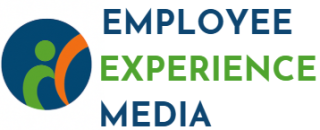
Understanding Workforce Enablement
Embracing Workforce Enablement: A Strategic Approach
In today’s competitive business landscape, the concept of workforce enablement has become a pivotal strategy for organizations aiming to improve employee satisfaction and productivity. Essentially, workforce enablement involves equipping employees with the necessary tools, resources, and support to perform their roles effectively. This strategic approach not only impacts employee engagement but also influences customer satisfaction and overall business outcomes.
Empowering your frontline workforce with real-time access to essential resources is a cornerstone of workforce enablement. By ensuring employees feel supported and equipped, organizations can enhance decision making and deliver superior customer service. Businesses are increasingly investing in enablement initiatives to foster a work environment that encourages continuous learning and development opportunities.
Moreover, workforce enablement is intrinsically linked to employee enablement, as both aim to remove barriers to success and facilitate a positive work environment. With the right enablement solutions, employees can better manage their time and focus on key business objectives, ultimately contributing to long term organizational success. As we delve deeper into the key components of workforce enablement, it becomes evident that understanding and addressing these factors can transform how organizations operate and thrive.
Key Components of Workforce Enablement
Foundational Elements of Workforce Enablement
Effective workforce enablement encompasses several key components that contribute to enhancing employee experience. By focusing on these elements, organizations can create a work environment where employees feel empowered, engaged, and productive.- Access to Resources: Providing employees with the necessary tools and resources is crucial for effective enablement. This includes access to technology, information, and physical tools that enable efficient task completion.
- Communication and Collaboration: Establishing good communication channels ensures that employees can easily access important information and collaborate effectively with their peers. It also promotes transparency and fosters a culture of open dialogue, contributing to employee satisfaction.
- Decision-Making Autonomy: When employees have the authority to make decisions relevant to their roles, they are more likely to be engaged and take ownership of their work. Empowering employees with decision-making capabilities fosters a sense of responsibility and boosts motivation.
- Continuous Learning: Promoting training development and continuous learning opportunities enables employees to upskill and stay updated with the latest industry trends. This investment in development opportunities not only enhances employee productivity but also contributes to long-term business goals.
- Enablement Solutions: Tailored enablement initiatives can support the frontline workforce, particularly in patient care and customer service sectors. These initiatives ensure that employees have the right tools and support to excel in their specific roles.
- Supportive Work Environment: A supportive organizational culture is pivotal in fostering employee engagement. When organizations prioritize employee enablement, they create an environment where employees feel valued and satisfied.
The Role of Technology in Workforce Enablement
Technology as a Pillar of Modern Enablement Solutions
In today's fast-paced business environment, technology plays an indispensable role in workforce enablement. Organizations are increasingly utilizing advanced tools to improve employee engagement and overall productivity. These technologies not only streamline processes but also provide employees with the resources they need to perform their duties more efficiently. Modern digital transformation initiatives are crucial for organizations aiming to enhance their workforce. These initiatives often encompass various facets like communication platforms, data analytics, and enablement solutions that meet the dynamic needs of the workforce. By leveraging these tools, companies can foster a work environment that prioritizes employee satisfaction and engagement.Optimizing Communication Through Technology
Effective communication is vital for employee enablement. By adopting the right communication technologies, businesses can ensure that their employees have access to real-time, seamless interactions. This leads to better decision making and improves overall customer satisfaction by minimizing response times in customer service scenarios. Furthermore, enabling employees with the right communication tools can significantly enhance patient care in healthcare settings or customer interactions in service industries. Ensuring that frontline employees feel supported with state-of-the-art communication resources is essential for maintaining a productive work environment.Data-Driven Decision Making
One of the key advantages of integrating technology in workforce enablement is the use of data analytics. Organizations can harness data to make informed decisions, personalize training and development opportunities, and track performance metrics more effectively. With data-backed insights, businesses can tailor their employee development initiatives to align with individual needs, enhancing satisfaction and productivity in the long term. These data-driven approaches also allow organizations to measure the impact of their enablement initiatives, adjusting strategies as necessary to optimize outcomes. By continuously refining their strategies based on solid data, businesses stay agile and responsive to workforce changes. To delve deeper into how real-time feedback can transform workplace dynamics, you might find this guide on real-time feedback and its benefits insightful.Training and Development as Enablers
Empowering Through Training Enhancements
Training and development serve as key enablers in fostering an environment where employees feel empowered to perform their best. By focusing on comprehensive training development initiatives, organizations can significantly enhance workforce enablement. The ultimate goal is to provide employees with the resources and knowledge they need to succeed, boost productivity, and improve overall employee satisfaction.
A well-structured training program considers various aspects of workforce needs, such as:
- Continuous Learning Opportunities: Encouraging ongoing development through workshops, seminars, and online courses helps employees stay updated with industry trends and enhances their skillsets.
- Access to Resources: Ensuring that the workforce has access to necessary resources, such as digital tools and data, can revolutionize the way work is done, in turn leading to higher efficiency and employee engagement.
- Decision-Making Support: Training programs that offer real-time feedback empower employees to make informed decisions, improving service quality and customer satisfaction. Frontline workforce, in particular, benefits greatly from accessible decision-support tools.
A strategic approach to training also involves acknowledging the role of technology and digital transformation in creating a more connected work environment. By integrating technology into training modules, organizations can enhance communication, streamline business operations, and enable employees to deliver exceptional customer service effectively.
Moreover, enablement solutions tailored to specific organizational needs can drive better adoption rates and empower employees to leverage their skills in the best possible way. This holistic approach not only boosts employee satisfaction but also aids in achieving long-term business goals.
Aside from the immediate performance improvements, investing in training and development as a core component of workforce enablement can lead to broader organizational benefits like improved patient care in healthcare settings or enhanced customer service performance. Through these training efforts, employees gain a competitive edge, aligning personal growth with organizational success, making it a win-win strategy for both parties involved.













